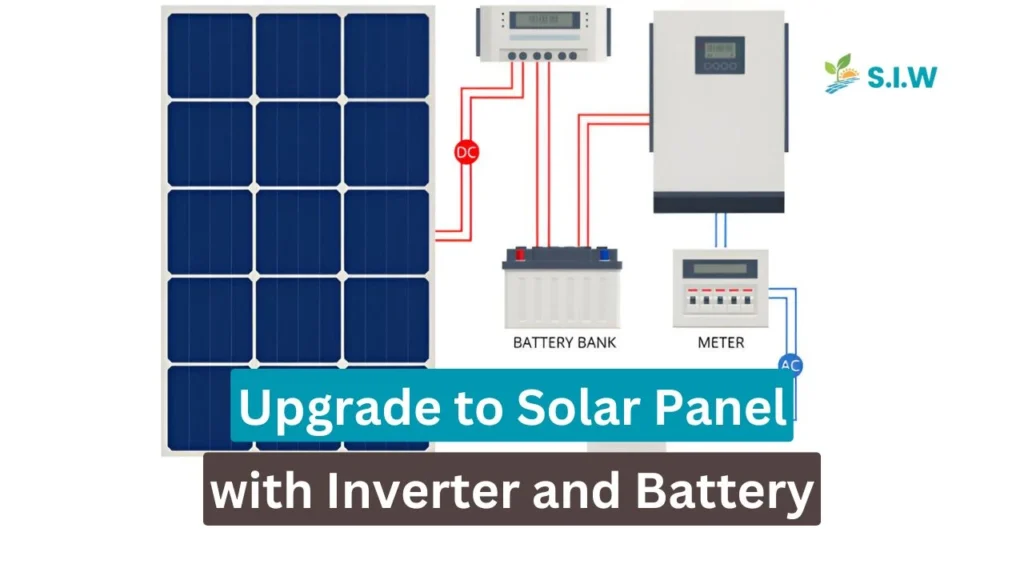Switching to solar energy has become a game-changer for homeowners and businesses. Solar panel systems have evolved, offering more than just eco-friendly electricity. By upgrading your solar system with an inverter and battery, you unlock new levels of efficiency, reliability, and energy independence. In this comprehensive guide, we will walk you through everything you need to know about upgrading to solar panel systems with inverters and batteries.
Solar Panel Systems
Solar energy has seen remarkable growth, offering an affordable and sustainable alternative to traditional power sources. Solar panels capture sunlight and convert it into electricity, reducing dependency on fossil fuels. This renewable energy source has gained popularity worldwide due to lower installation costs and government incentives.
However, many solar systems rely solely on direct sunlight, limiting their efficiency during cloudy days or at night. This is where inverters and batteries come into play, improving your solar panel’s functionality and reliability.
What Is an Inverter and Why Is It Important?
In a solar panel system, the inverter is crucial as it converts direct current (DC) generated by solar panels into alternating current (AC), which powers homes and businesses. Without an inverter, the electricity generated by your solar panels would be unusable for most appliances.
There are three main types of inverters:
- String Inverters: Traditional and widely used, converting power from a series of solar panels.
- Microinverters: Installed on each panel, offering better efficiency and monitoring.
- Hybrid Inverters: Allow for battery storage, making them perfect for systems that aim for energy independence.
Role of Batteries in Solar Systems
While inverters allow you to use solar-generated power immediately, batteries store excess energy for later use, particularly when the sun isn’t shining. This means you can still use solar power during the night or on cloudy days.
There are several battery types for solar systems, including:
- Lithium-Ion Batteries: Known for their long lifespan and high efficiency.
- Lead-Acid Batteries: More affordable but with shorter lifespans.
- Flow Batteries: Newer technology offering extended energy storage capabilities.
Why Upgrade to Solar with an Inverter and Battery?
Upgrading your solar system to include an inverter and battery offers numerous advantages. Firstly, it provides energy independence, allowing you to store and use electricity when it’s most needed. Secondly, it leads to significant long-term cost savings, reducing your reliance on the grid and lowering electricity bills.
Additionally, solar panel systems paired with inverters and batteries can continue to function during power outages, ensuring you have backup power when the grid fails.
Steps to Upgrading Your Solar System
Upgrading to a solar system with an inverter and battery is a straightforward process:
- Assess Your Current System: Determine if your solar panels are compatible with an inverter and battery.
- Choose the Right Components: Select the right inverter and battery that meet your energy needs.
- Hire a Professional: It’s essential to have a licensed professional install your system to ensure safety and compliance with regulations.
Cost Considerations and Financial Benefits
While the initial costs of upgrading to a solar system with an inverter and battery can be high, the long-term savings are undeniable. You’ll reduce or even eliminate electricity bills, and many regions offer government incentives, tax credits, and rebates to help offset the cost.
FAQs:
- How long does the upgrade take? Upgrading typically takes 1–2 days, depending on the complexity of the installation.
- What’s the lifespan of a solar battery? Most batteries last between 10-15 years with proper maintenance.
- Can I add an inverter to an existing solar system? Yes, but it’s essential to ensure compatibility with your current system.
- Do I need a permit to upgrade my system? Permits are often required, but your installer can help navigate the process.
- What is the maintenance cost of solar batteries? Maintenance is minimal, primarily consisting of occasional inspections and cleaning.
- How do inverters and batteries affect my electricity bill? By reducing reliance on the grid, your bill will decrease significantly, and some users may even achieve a zero-dollar bill depending on the system size.
Upgrading to a solar panel system with an inverter and battery not only saves money but also enhances energy efficiency and reliability. Whether you’re looking for energy independence, long-term financial savings, or environmental benefits, this upgrade is a worthy investment for a sustainable future.








